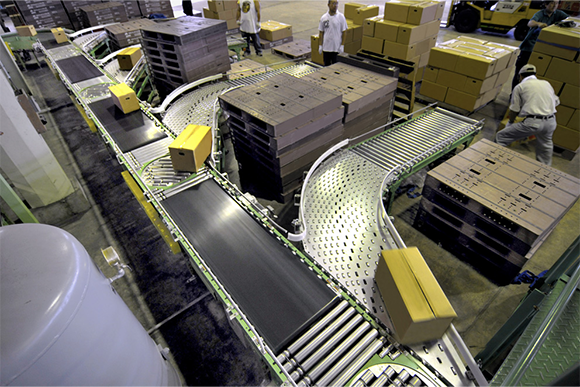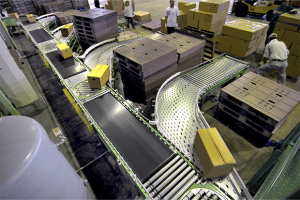Introduction
As we discussed, sortation systems have emerged as a transformative solution, enabling facilities to achieve greater throughput, accuracy, and consistency. By automating the sorting process, companies can significantly reduce manual errors and labour costs while improving overall operational efficiency.
This article delves into what sorting robots are, how they function, and their pivotal role in modern automation systems.
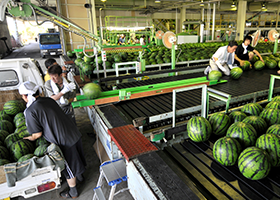
What Are Sorting Robots?
Sorting robots are automated systems equipped with robotic arms, vision technology, and AI algorithms designed to identify, categorise, and route products or packages. These robots are commonly used in environments where a variety of items must be quickly sorted based on predefined criteria such as size, shape, weight, barcode, or destination.
Unlike conventional conveyor-based sorting mechanisms, sorting robots offer flexibility and scalability. They can adapt to changes in product types or sorting requirements without major system overhauls. Depending on the application, these robots can be fixed or mobile and can handle anything from small parcels to large containers.
How Do Sorting Robots Work?
Sorting robots operate using a combination of hardware and software systems:
- Vision Systems and Sensors: Cameras and sensors capture data about the items, including dimensions, labels, and orientation.
- AI and Machine Learning Algorithms: These interpret the visual data to make real-time sorting decisions based on pre-programmed criteria.
- Robotic Arms or Grippers: Mechanised components pick up, move, or divert items to their correct locations.
- Integrated Control Systems: These systems communicate with warehouse management software (WMS) or manufacturing execution systems (MES) to coordinate sorting tasks and update inventory status.
By continuously scanning and classifying items, sorting robots ensure that products are directed to the right place, whether it’s a packaging station, shipping dock, or storage zone.
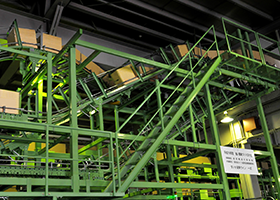
Advantages of Sorting Robots
- Enhanced Sorting Accuracy
Robots eliminate many of the errors associated with manual sorting. Vision systems detect subtle differences between items, ensuring accurate classification. - Higher Throughput Rates
Automated systems can handle thousands of items per hour, significantly increasing productivity and enabling faster order fulfilment. - Labour Cost Reduction
By automating repetitive tasks, companies can reduce reliance on manual labour and reallocate human resources to higher-value roles. - Scalability and Flexibility
Sorting robots can be easily reprogrammed or expanded to accommodate new product lines or increased volume without large infrastructure changes. - Real-Time Data Collection
Integrated analytics provide insights into sorting efficiency, error rates, and inventory flow, supporting better operational decisions. - Improved Workplace Safety
Minimising human interaction with heavy or fast-moving items helps reduce the risk of injury and enhances overall workplace safety.
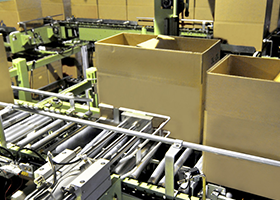
Applications of Sorting Robots in Automation
Sorting robots are deployed in a wide range of industries:
- E-commerce and Retail: For sorting orders by destination or carrier, especially during peak periods.
- Logistics and Distribution Centres: To streamline parcel routing and reduce delivery times.
- Manufacturing: For component sorting in assembly lines, ensuring the right parts are delivered to the right stations.
- Food and Beverage: For categorising packaged goods based on expiry dates, batch numbers, or product types.
Real-world deployments often feature high-speed robotic systems integrated with conveyor lines and AI-driven software, enabling dynamic sorting in real time.
Factors to Consider When Adopting Sorting Robots
When integrating sorting robots, businesses should evaluate several factors:
- Type and Volume of Products: Determine if the sorting robot can handle the size, weight, and variability of your items.
- System Integration: Ensure compatibility with your existing automation infrastructure and software.
- Space and Layout Constraints: Assess the physical space available for robot deployment and movement.
- Budget and ROI: Consider the upfront investment versus the long-term savings in labour and efficiency.
- Maintenance and Support: Plan for regular maintenance and access to technical support to maintain optimal performance.
Conclusion
Sorting robots are revolutionising the way industries manage complex sorting tasks, delivering unmatched speed, accuracy, and adaptability. As businesses strive to meet increasing demand and customer expectations, the integration of sorting robots into automation strategies becomes a clear competitive advantage.
Whether you’re running a distribution centre, a manufacturing plant, or an e-commerce fulfilment hub, sorting robots can optimise your processes and future-proof your operations. Connect with Okura Singapore to explore industrial automation solutions, including advanced sorting robots, can transform your business.
